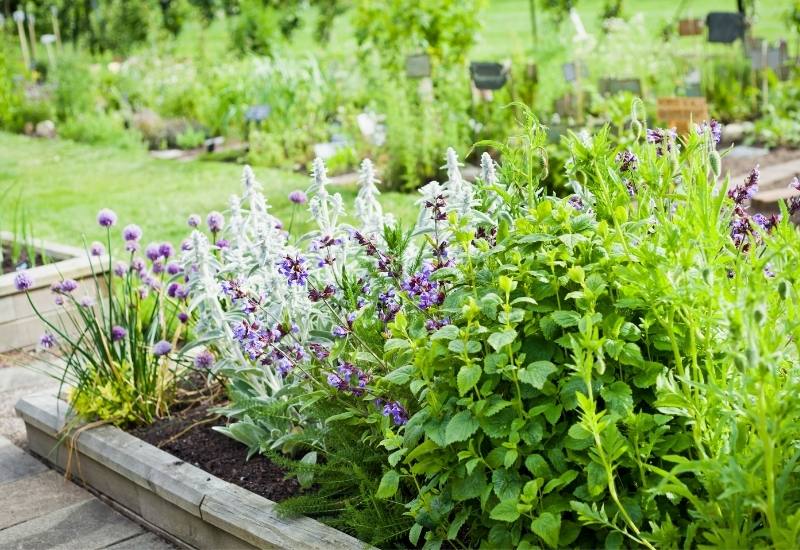
What could be better than having fresh herbs in your garden return every spring?
Growing perennial herbs in your garden means you can reap the benefits of growing edible and medicinal herbs from one growing season to the next, with very little effort on your part!
Here are the 20 all time best perennial herbs that you plant just once and harvest year after year, and why you should grow them in your garden or container!
What is a Perennial Herb?
Perennial herbs will establish themselves in your garden and return for a variable number of years without a new planting.
Come spring, you’ll see your perennial herb either pop up again or regrow leaves after winter.
This is in contrast to annual herbs, which will just survive one season and then die back, and new seeds or seedlings need to be planted the following year.
Benefits of a Perennial Herb Garden
If you have ever grown perennial herbs before, you will already know how productive they are for what feels like very little work.
As a reminder, or for beginners, here are some of the awesome benefits that growing perennial herbs provide:
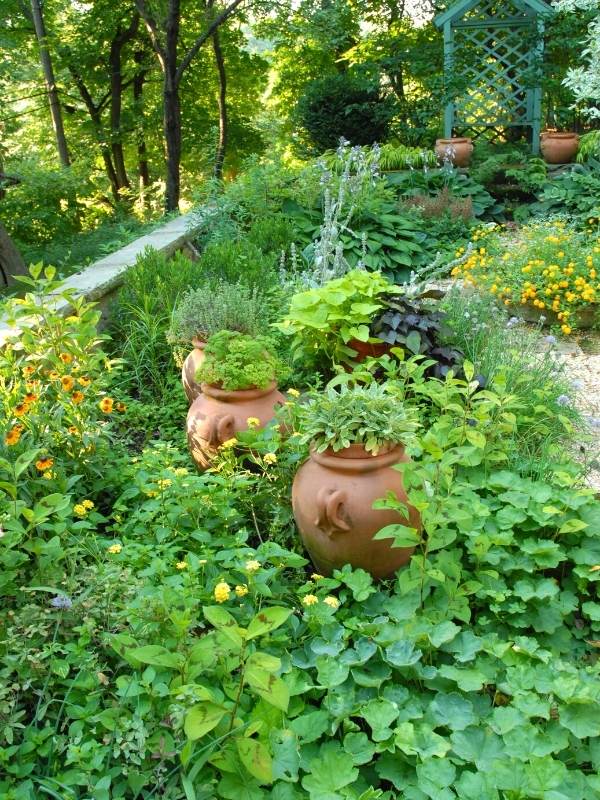
Perennials Are Less Work Than Annuals
By nature, perennial herbs will come back every year without any work on your part. The typical spring garden chores of preparing beds, starting seedlings and planting do not apply to perennials.
You will probably need to do some light weeding and pruning but overall you can sit back and relax as you watch them come back year after year!
Perennial Herbs Offer A Reliable Harvest Every Year
Perennial herbs offer you a consistent harvest for as many years as they live, so you can count on being able to use fresh rosemary in your cooking every summer.
If you bring them indoors to extend the season you can keep harvesting into the winter as well. Many annual plants offer no guarantee of germination or success, but barring a disaster you can count on your perennial herbs to be consistent producers.
No Digging Or Tilling Is Better For Soil
Since perennial herbs will return in the same spot that they have been planted, the soil there gets to sit undisturbed from tilling equipment for a few years.
Topsoil contains lots of essential bacteria, microorganisms and nutrients that are destroyed or leached out through tilling, and perennial herbs allow the soil food web to develop and strengthen in patches of your garden, creating an overall healthier soil system.
Perennial Herbs Can Mark Out Your Garden And Define Beds
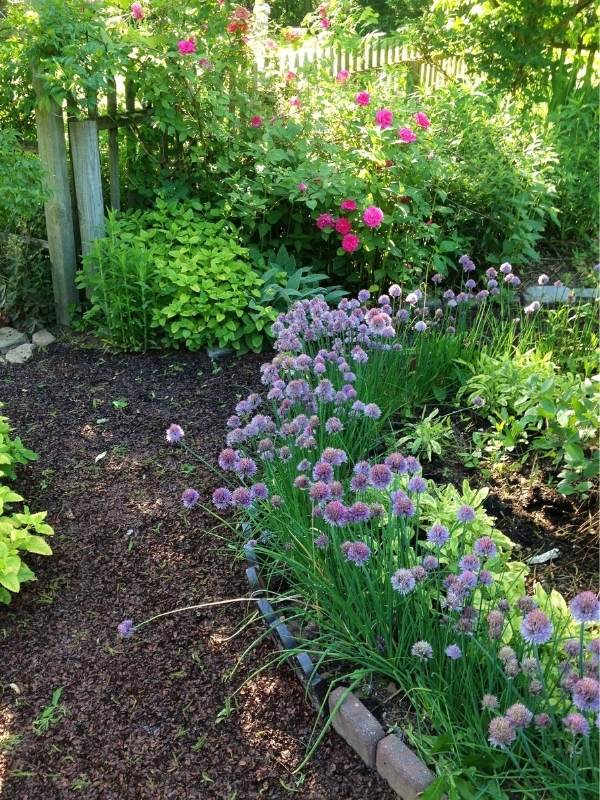
Perennial herbs are helpful cornerstones for garden design, and can delineate the edges of beds or the beginning of rows.
Every spring when your garden is a bit of a mess your perennials can help you re-establish a sense of order and map out what goes where.
They Extend Your Harvest Into The Spring And Fall Months
Many perennial herbs will produce a harvest in the cooler border seasons of spring and fall, allowing you to extend your harvests to be almost year round.
As mentioned above, you can even bring many potted perennials indoors for the winter and even have fresh herbs in the winter!
Perennial Herbs Will Become An Aesthetic Feature Of Your Garden
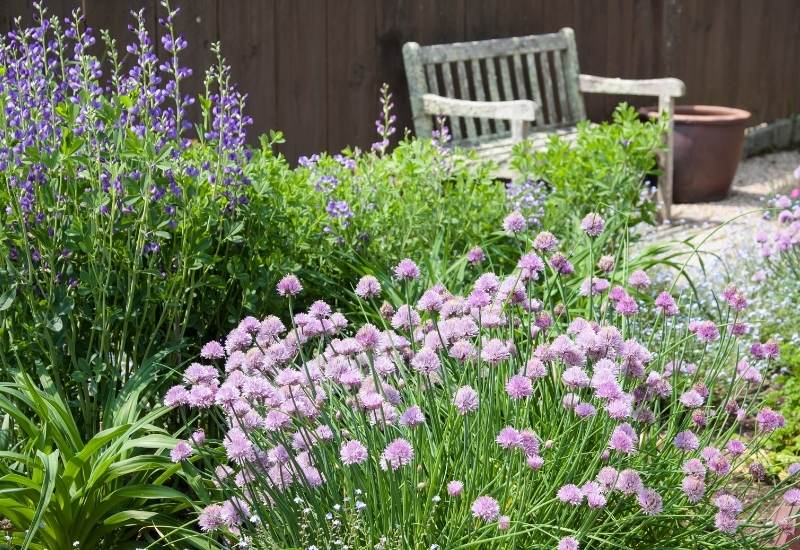
Perennial herbs not only map out your garden but also beautify it, and many offer ornamental as well as productive features.
Creeping thyme is often enjoyed for its low growing carpet of foliage that spills over pots and raised beds and decorates low stone walls.
They Bring Pollinators Back Every Year
Every spring when pollinators come out again, your perennial herbs will offer some of the first blooms to attract them to your garden and get your annual plants pollinated!
Many herbs are highly fragrant and beloved by bees and butterflies, and can make your garden into a space where pollinators feel welcomed every year.
They Are Versatile Companion Plants That Effectively Deter Insects
The fragrant smells of many perennial herbs not only attract beneficial insects and pollinators, but actively deter many common garden pests.
A number of annual vegetables grow very well next to perennial herbs as companion plants, and the herbs can be used as a form of integrated pest management that keep your garden healthy without any need for chemicals.
20 Perennial Herbs That Will come back on its own every year
Here is a list of our favorite 20 perennial herbs that are worth growing for their ornamental, medicinal, or culinary uses – or all three!
1. Oregano
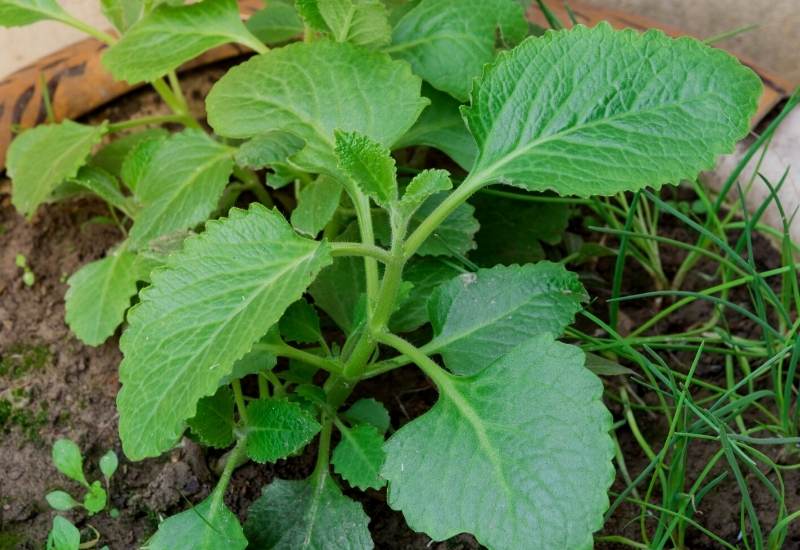
Oregano is a hardy perennial herb that produces small purple or white flowers which are edible and attractive to pollinators. It has a zesty flavor and is a common companion plant for vegetables due to its pest-deterrent qualities, particularly for the cabbage butterfly.
They will provide an excellent harvest for around 4 years, after which point the leaves will be less flavorful. Oregano will easily self-seed so let the plant flower and finish its life cycle to see new plants pop up the next year.
2. Thyme

Thyme is a low-growing, woody perennial with many small oval-shaped leaves that have a powerful aroma and flavor. After four years the plant will be less productive and you may notice most of the stems have become woody, at which point you should take cuttings to produce new plants. Thyme is low-growing and low maintenance, making it well suited for container gardening.
3. Sorrel
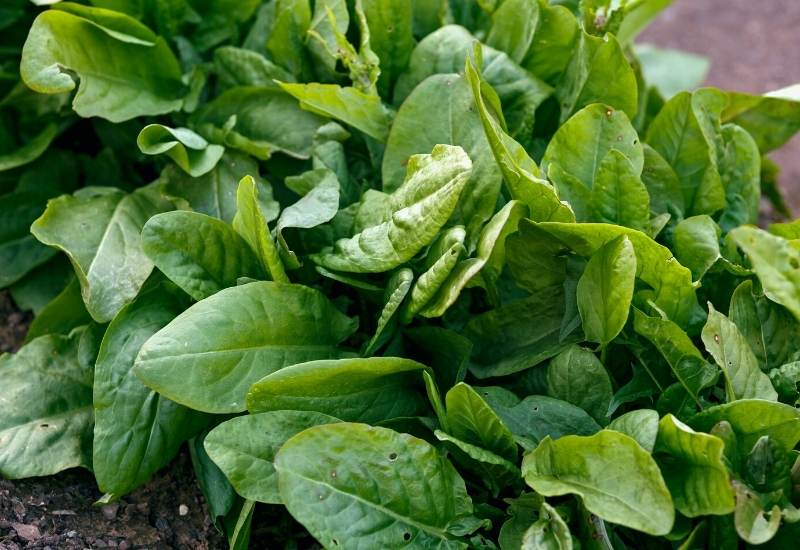
Sorrel is a herbaceous perennial often grown as a leafy green as well as a herb, with young leaves tasting like a more tangy version of spinach.
Once mature, sorrel leaves become much stronger in flavor and are used as a herb. During the winter the plants will die back completely and re-emerge in the spring with fresh leaves.
4. Sage
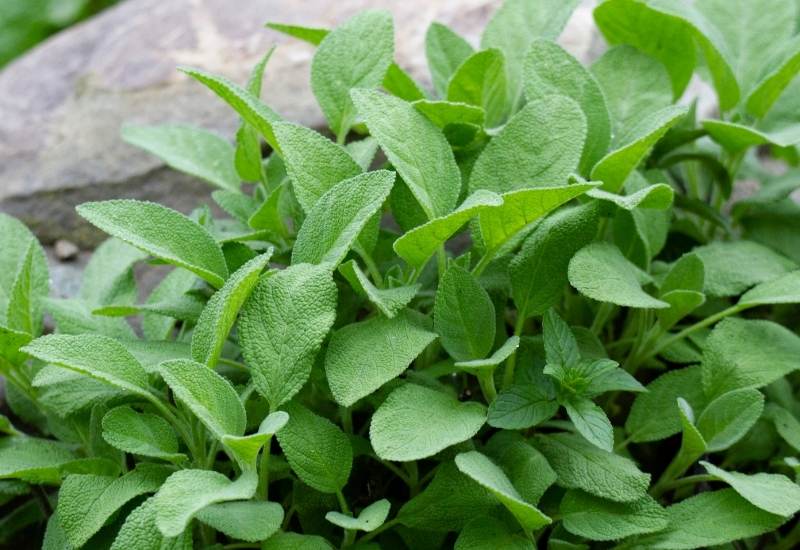
Sage, or Salvia, is a woody perennial with hundreds of different cultivars used for many purposes including culinary and medicinal. The leaves are often a grey/silver green and the plants will produce tall, lupin-like flowers that are pink, purple, white or blue.
There are a few varieties of sage that are annual, so make sure to choose a perennial one to see this beautiful plant return every season.
5. Rosemary

Rosemary is a perennial shrub native to the Mediterranean that is popularly used in cooking. In the right conditions, rosemary can become a large bush with more growth than any cook could likely harvest and use!
In hot climates, rosemary can be grown outdoors, but if you live in a region where temperatures drop below freezing in the winter, you should grow rosemary in a container that can be brought inside to protect it.
6. Lavender
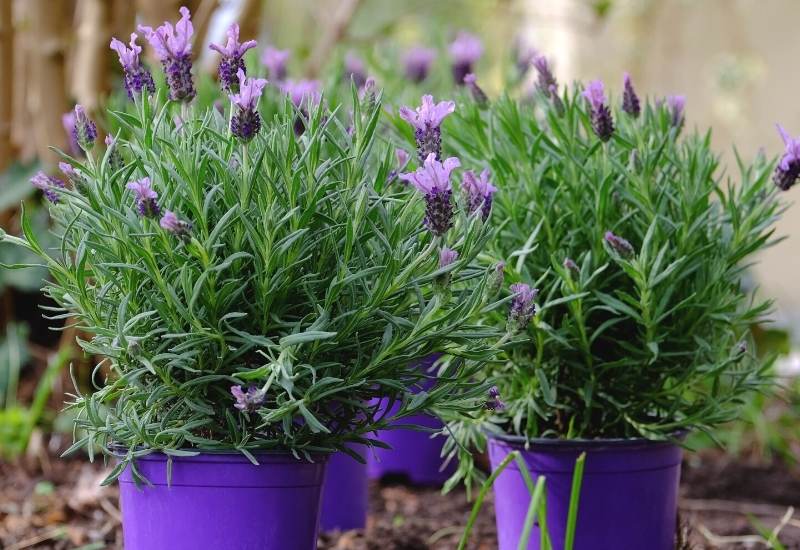
Another perennial hailing from the Mediterranean, lavender is famed for its distinct scent which is used in many products from soap to medicine, and it’s sprigs also have culinary uses in baked goods.
It has silvery grey leaves and is usually most recognized by its tall purple flowers which are loved by pollinators. With correct pruning, lavender bushes can live between 5 and 15 years, depending on the variety.
7. Roman Chamomile
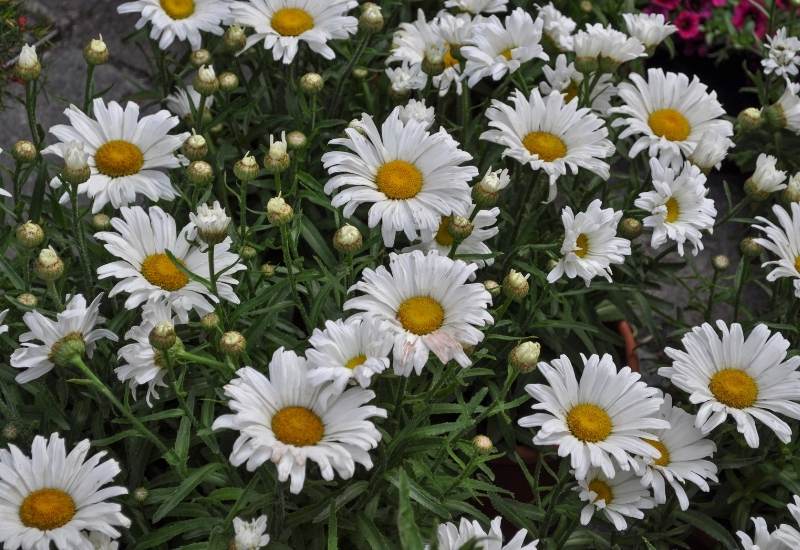
Roman chamomile, unlike German chamomile, is a perennial herb that will regrow from the same root from one year to the next.
Often used in tea, chamomile has been around for centuries as a medicinal herb reputed for its calming effects. The flowers are the part of the plant that is typically harvested, and closely resemble daisies when they are in bloom, only a little larger.
8. Tarragon
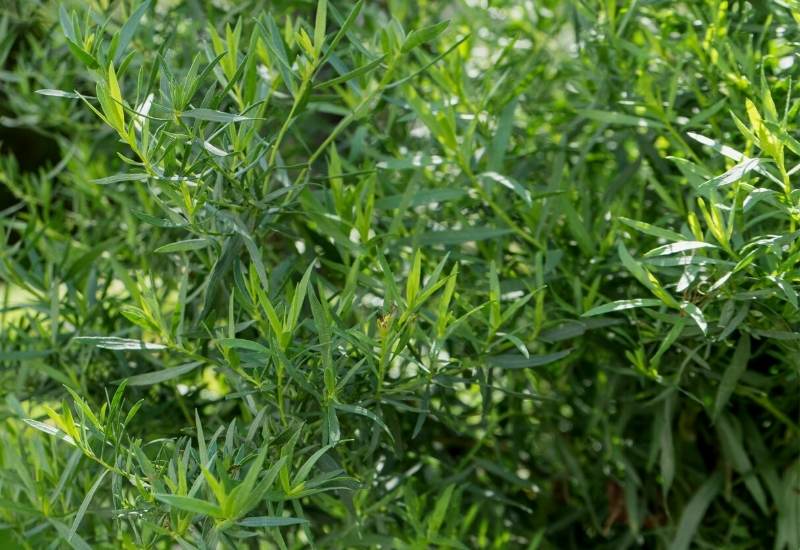
Both French and Russian tarragon are perennial herbs, but French tarragon is more flavorful and suited for cooking. Tarragon plants can grow to about 2-3 feet tall and have long, light green leaves. Most tarragon plants will live around 3-4 years after which point they should be replaced.
9. Marjoram
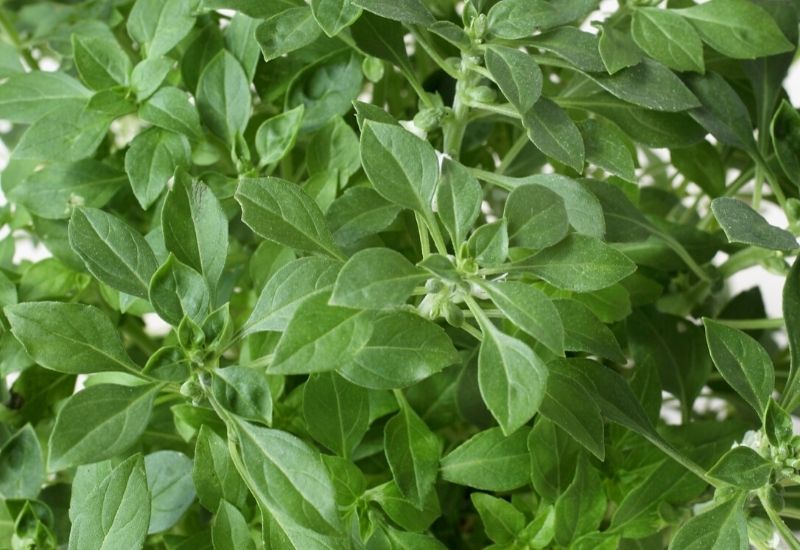
Marjoram is a low-growing perennial very closely related to oregano. It is often used as a companion plant because it attracts beneficial insects, like pollinators, and deters pests.
In Northern climates they are often treated as annuals as they will die completely in below freezing temperatures, but they can be brought indoors to avoid this. Marjoram does very well in containers, so if you are in a region with heavy winters grow it in a window-box or pot.
10. Mint
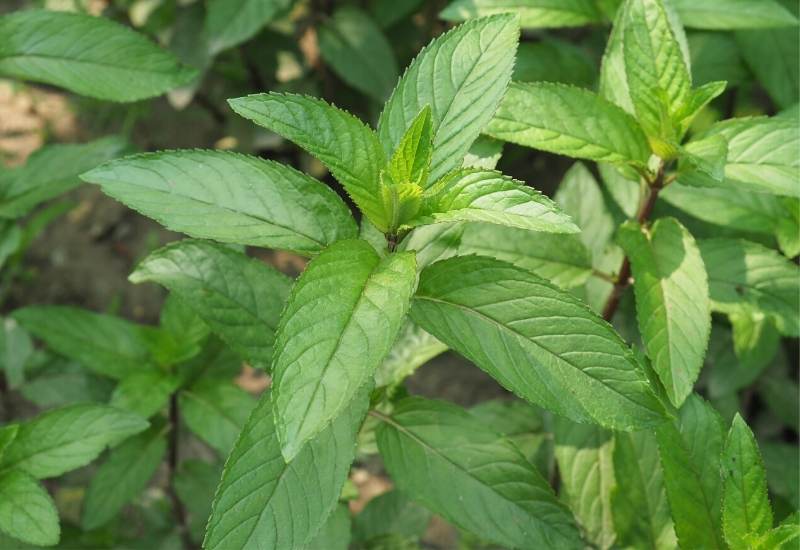
Mint is one of the most famous backyard garden perennials, often returning with such vigor that it becomes a nuisance. For this reason, it can be a good idea to grow mint in a pot or raised bed, to contain some of its spread.
There are hundreds of varieties of mint, all with distinct flavors and characteristics, but generally mint leaves are some shade of green with scalloped edges.
11. Yarrow
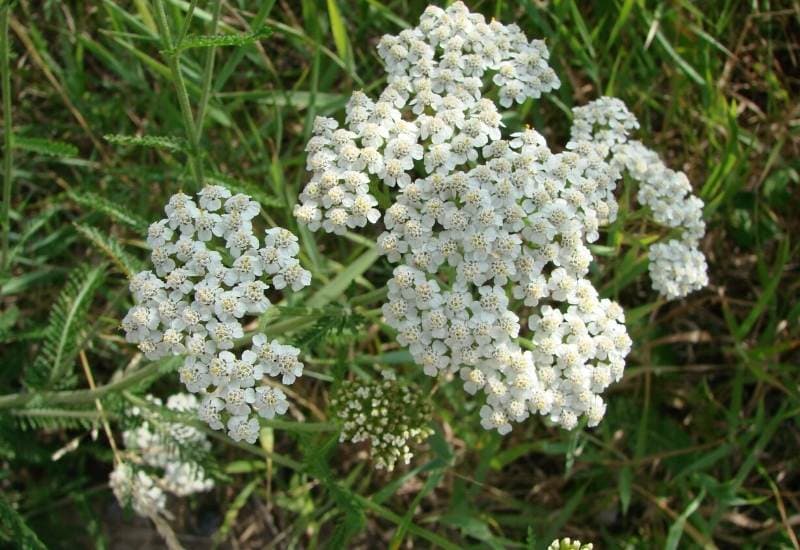
Yarrow is a low-maintenance addition to your perennial herb collection with flowers that will attract pollinators.
Yarrow flowers can be yellow, white, pink and even red, and offer ornamental value and are a great way to delineate edges and borders in your garden. It can grow quite vigorously so it should be occasionally pruned so that it doesn’t take over your space.
12. Lemon Balm
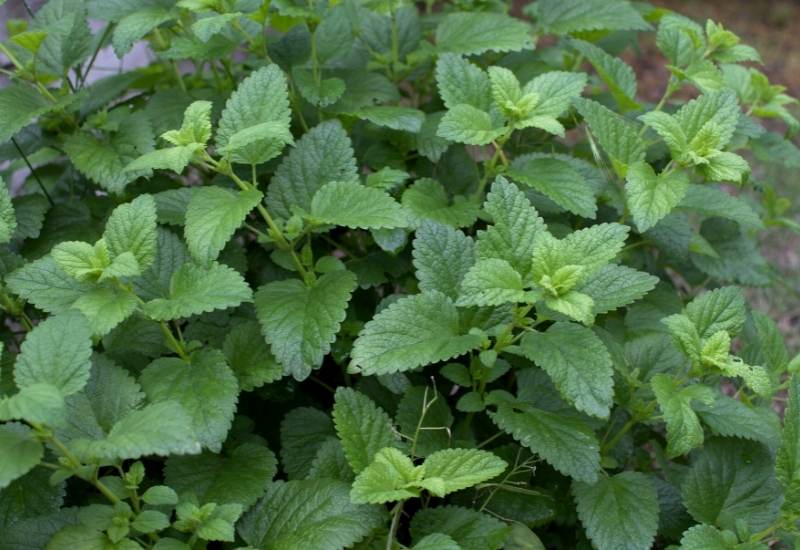
A member of the mint family, lemon balm is a popular perennial herb that most gardeners will already have growing in their gardens. It spreads quickly so consider growing it in a pot to contain and control some of the growth.
In addition to being a perennial it will self seed vigorously so make sure to cut back blooms if you don’t want a bunch of extra plants popping up next season. The leaves provide a mild lemon-y flavor and have culinary and medicinal uses.
13. Bay Laurel
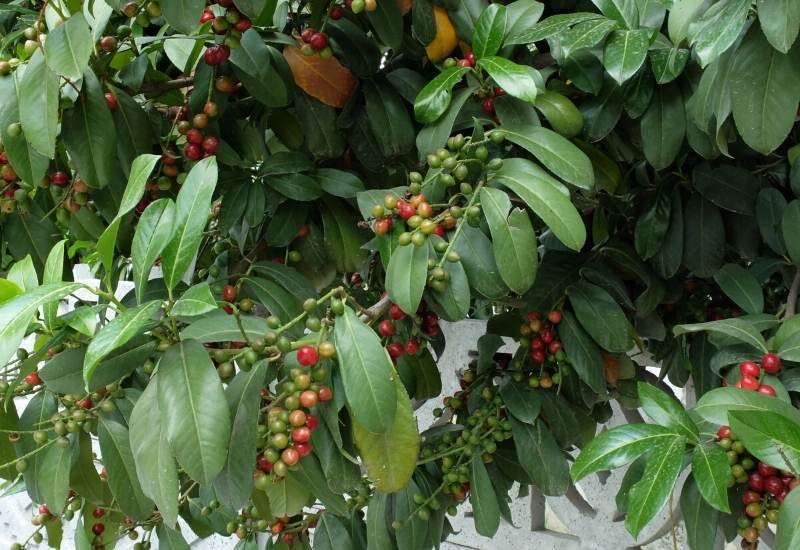
The bay laurel, or bay, tree is an evergreen shrub-like tree that produces leaves commonly used as a seasoning for stews.
When correctly pruned, the tree is kept to a small bush shape and can be grown in a container, but untended trees can grow very tall- up to 60 feet!
Only in warm climates should bay laurel be planted in the ground outdoors, and if you experience freezing winter temperatures you should keep it in a container that can be moved indoors.
Although safe for humans, bay laurel is toxic to many animals so keep your cats, dogs, and horses away from this plant.
14. Rue
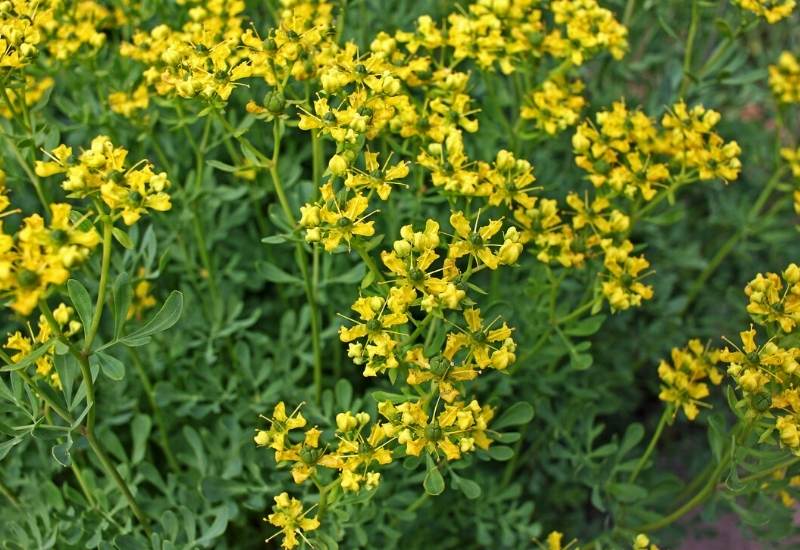
Rue is an evergreen herb that has been cultivated for hundreds of years. It has many uses in traditional medicines, and although the leaves are very bitter it is used in certain spice mixes and certain cuisines.
It is poisonous in large quantities so ingest with caution! As a garden herb, it is a great companion plant due to its pest-deterrent qualities that ward off moths and fly larvae.
15. Hyssop
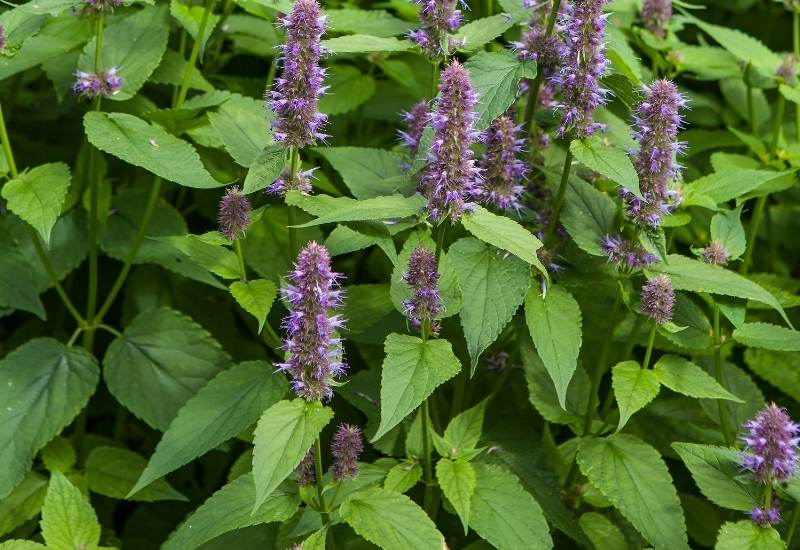
Another perennial herb that has been used for centuries, hyssop is a member of the mint family grown for its leaves and flowers. It has a sweet smell and a slightly bitter flavor that is used medicinally and culinarily.
The flowers are arranged in towering purple clusters that resemble lavender, and are attractive to many pollinators.
16. Wild Bergamot
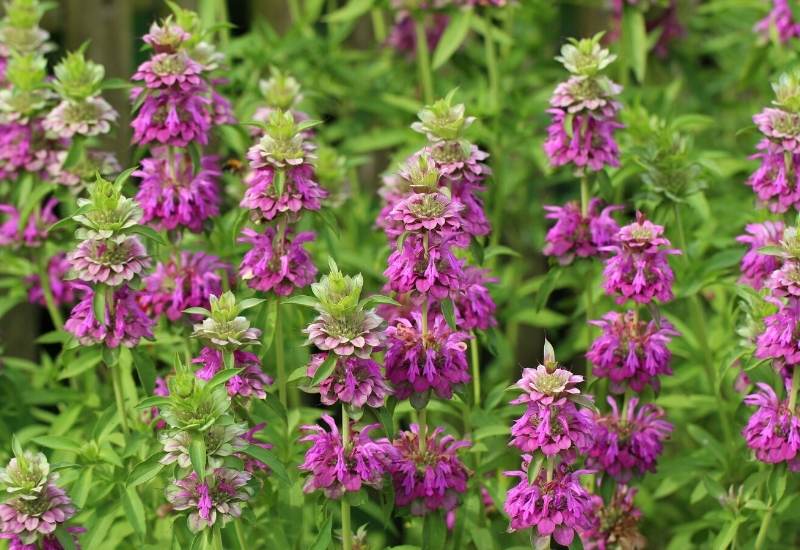
Bergamot, also known as ‘Bee Balm’ is a hardy perennial native to the East coast of North America. They can grow into bushy plants that reach a height of two to four feet, and produce spiky pink or purple flowers that are beloved by bees and disliked by mosquitoes.
The flowers are edible and can be used in teas or as an edible garnish, and you should replant Wild Bergamot every three years for the healthiest plants.
17. Echinacea (Coneflower)

Coneflowers are both an ornamental perennial flower and a herb, which can bloom from July all the way until the first frost in some climates. They are in the daisy family, and look very much like oversized daisies but more colorful.
Pollinators like butterflies, bees, and even songbirds love coneflowers, and they are a great way to brighten up your garden for many seasons to come. Every four years or so, replant to continue the colorful summertime blooms.
18. Valerian
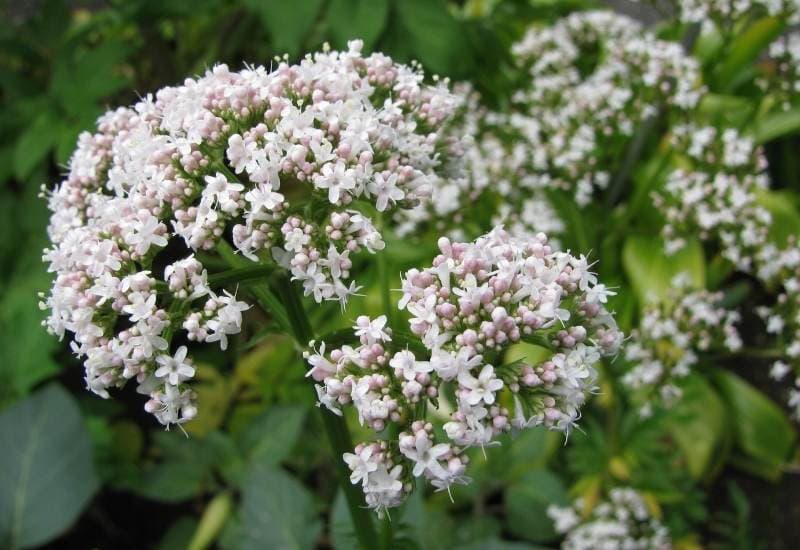
Valerian is a flowering perennial often grown for its root, but its flowers are a good way to attract pollinators to your garden. It’s flowers attract several types of fly that butterflies feed on, making it a great butterfly plant.
If you are planning to grow valerian for its roots, plant several plants at a time, as there is a risk the plant won’t survive a partial root harvest. The flowers have a sweet vanilla-y scent and the root is used in teas and capsules as a sleep-aid.
19. Marshmallow
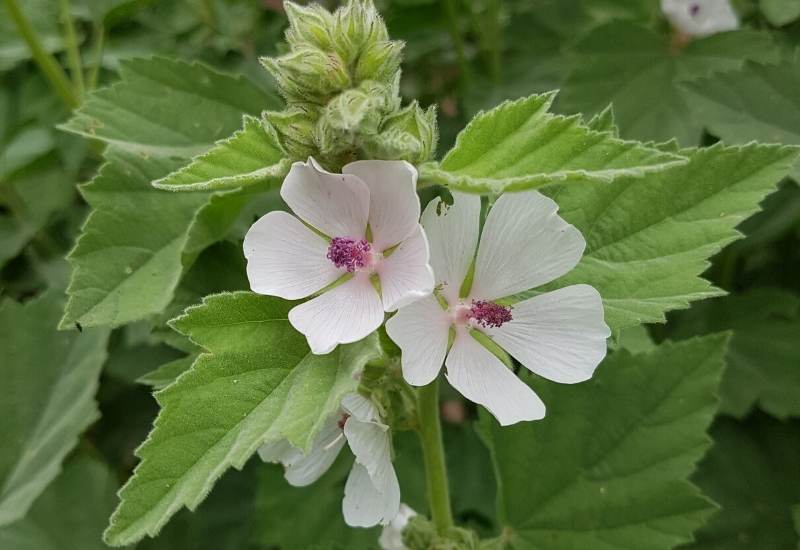
Marshmallow is another herbaceous perennial used for its root and flowers. The flowers, leaves, and roots are all edible and typically used for medicinal purposes, and yes it is where the modern marshmallow candy gets its name (and that story is worth a google)!
Plant several plants if harvesting for the root, which is renowned for helping with respiratory issues.
20. Sweet Cicely
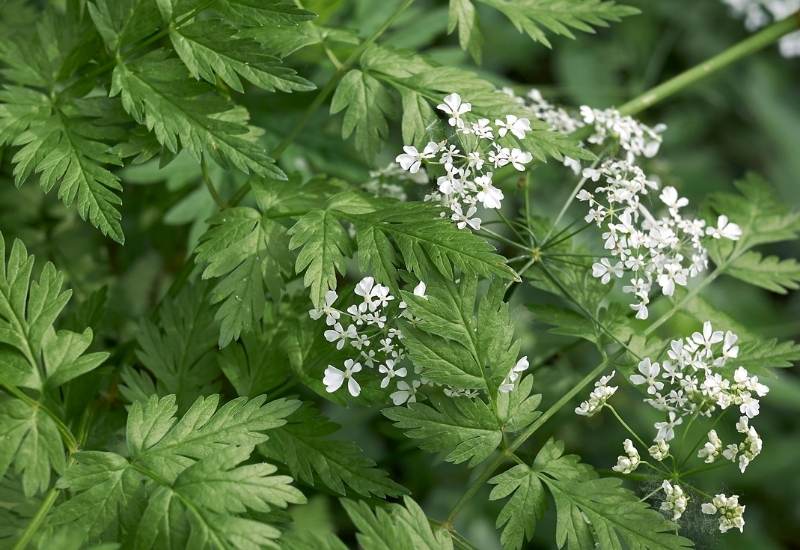
With all parts of the sweet cicely plant being edible it is an underrated perennial garden herb, especially considering its attractive fern-like foliage and ornamental clusters of small white flowers.
The leaves can be cooked or eaten fresh, the seeds are sweet and can be eaten like candy, the flowers attract bees and other pollinators, and the root can be boiled and used medicinally- you really get the bang for your buck with this herb!
Winter Care for Perennial Herbs
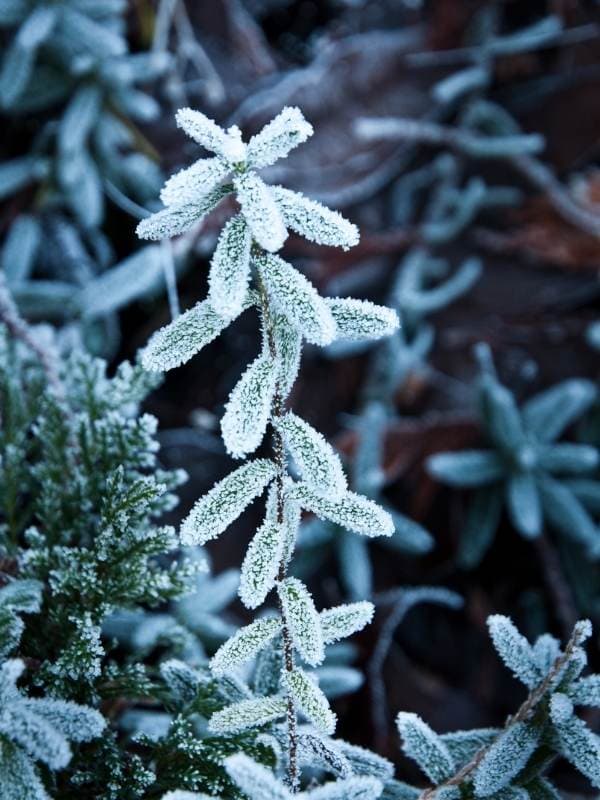
If you live in a region that experiences winter, and depending on the cold hardiness of your perennials, you may or may not need to spend some extra time preparing vulnerable herbs for winter.
Here are some steps you can take to help your herbs get through the winter:
Stop Fertilizing Herbs In September
Since fertilizer encourages fresh, new growth, make sure to halt all applications of it after the summer to avoid tender new growth being exposed to the cold.
Cut Down Hardy Perennials, Protect Tender Perennials
Hardy perennial herbs like chives, thyme, mint, oregano, and lavender will usually be fine in the winter.
After the first frost, cut them down to a height of around 4-5 inches so they are ready for fresh growth in the spring.
It is a good idea to add a layer of mulch or branches around those plants for extra protection. Tender perennials, like lemongrass, rosemary, and bay laurel, will need to be brought indoors for the winter, as they won’t survive hard freezes.
Bring Potted Perennials Indoors To Extend Harvest
If you are already growing some of your herbs in containers, you may be able to bring them indoors for the winter to extend the harvest and growing season.
Herbs like thyme or rosemary will generally last a while longer inside as long as they are placed on a sunny, south facing window sill.
If you live in a very northern climate it will eventually reach a point where there are too few hours of daylight for these herbs to keep producing, but you will still have gained a couple extra months of fresh herb use
Cut Down Outdoor Woody Perennials During Dormancy
Certain woody perennials like sage will begin new growth from the old stems and if they aren’t trimmed down, and over time your plant will have less and less harvestable foliage and become more like a pile of sticks.
This only applies to certain woody perennials (not lavender!), but for those it does apply to, prune back excessive woody growth in the winter while plants are dormant, to encourage fresh growth in the spring.
Important Tips for Perennial Herb Care
Use these tips to ensure that the herbs in your garden will keep growing back year after year.

Written By
Maya
Maya is a freelance content writer and avid gardener currently based in Sweden. She gained her BA in Environment and Geography in Canada, which is also where she first learnt about the detriments of the industrialized agricultural system. During the summer she began farming through the WWOOF program, and over the next six years has continued to grow and learn at a number of organic farms and gardens across the US and Canada. She is passionate about the role of regenerative agriculture in wildlife conservation and climate change mitigation, and thinks growing your own food is a key part of revolutionizing the system. In her free time she likes to read, garden, and pet nice dogs.

Very comprehensive & informative, yet simply explained!
Very helpful!
Thank-you